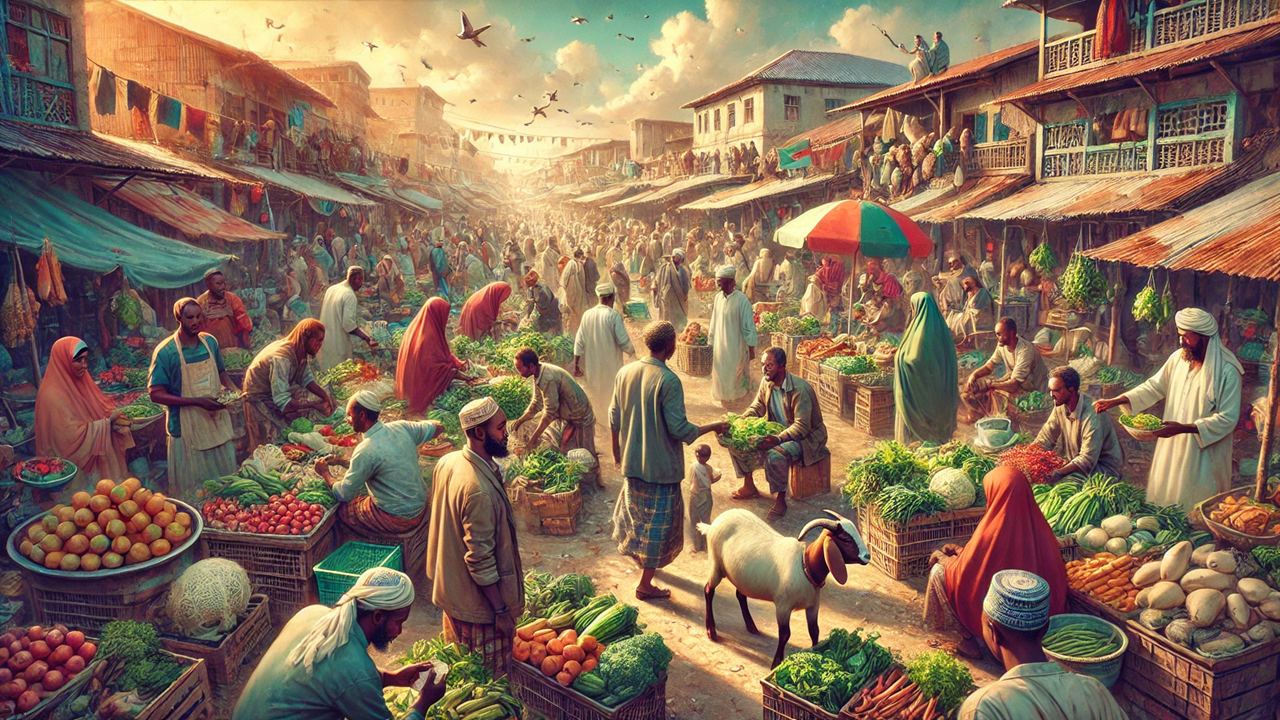Somalia's Economic Rebound: A Delicate Balance Between Growth and Climate Resilience
Somalia's economic recovery in 2023 showcases the country's resilience amidst significant challenges. Improved agricultural production, eased inflation, and fiscal stability are driving growth, while regional integration and debt relief offer new opportunities. However, climate change poses substantial risks, necessitating investments in resilience and sustainable development.

Economic Growth Amidst Adversity
In a year marked by significant challenges and recovery, Somalia's economy has shown remarkable resilience and growth. According to the "Somalia Economic Update, Ninth Edition: Addressing Climate Change Challenges for Economic Growth" by the World Bank, Somalia’s real GDP growth reached 3.1 percent in 2023, up from 2.4 percent in 2022. This rebound is largely attributed to favorable climatic conditions that led to improved agricultural production and a resurgence in livestock exports, the mainstay of the country's economy.
The end of a severe five-season drought in April 2023 brought much-needed rains, revitalizing crop yields and livestock health. As a result, food insecurity diminished, and private consumption saw a notable boost. Despite these gains, the economy's heavy reliance on imports continues to pose challenges, particularly in maintaining a favorable trade balance.
Easing Inflationary Pressures
Somalia also witnessed a decline in inflationary pressures, driven by the agricultural sector's recovery and a decrease in global commodity prices. Overall inflation dropped to an average of 6.1 percent in 2023 from 6.8 percent in the previous year. The most significant reduction was seen in food inflation, which plummeted to 0.7 percent from 13.9 percent in 2022. These trends have provided some relief to Somali households, who faced soaring prices in the recent past.
Fiscal Stability and Debt Relief
The Federal Government of Somalia (FGS) has made strides in maintaining fiscal stability, thanks to improved domestic revenue mobilization. In 2023, domestic revenues increased to 2.8 percent of GDP, up from 2.5 percent in 2022, closing the budget with a small surplus. However, domestic revenues still fall short of covering the country's extensive development needs, with external grants filling the gap.
A historic milestone was achieved in December 2023 when Somalia received full and irrevocable debt relief under the Heavily Indebted Poor Countries (HIPC) initiative. This move reduced the country's external debt to 5.4 percent of GDP, opening up opportunities for greater investment in development priorities and basic service expansion.
Regional Integration and Future Growth
Somalia's integration into regional and global economies is progressing. The country joined the East Africa Community (EAC) in March 2024 and is on track to join the World Trade Organization (WTO). These steps are expected to enhance trade integration and economic growth, offering access to a market of over 300 million people.
The economic outlook for Somalia remains cautiously optimistic, with projected GDP growth of 3.7 percent in 2024 and 3.9 percent in 2025. However, this outlook is tempered by significant risks, including global economic shocks, climate-related events, and security threats.
Climate Challenges and Resilience
Somalia's vulnerability to climate change is a pressing concern. The country faces severe climate risks such as droughts, floods, and locust infestations, which have significant social and economic impacts. The interplay between climate impacts and Somalia's social and political fragility exacerbates these challenges, particularly for rural populations, women, and youth.
Investing in resilience and preparedness is crucial for Somalia's future. This includes enhancing disaster risk management, social protection, and developing resilient rural livelihood systems. As urbanization accelerates, climate-proofing development through resilient infrastructure and climate-smart urban planning becomes essential.
Policy Actions for a Sustainable Future
Somalia needs to focus on long-term resilience by diversifying away from climate-dependent rural production sectors and addressing climate risks in growth sectors. Integrating climate resilience into national development plans, investing in human capital, and improving public health infrastructure are key steps.
To enhance resilience, it is vital to address the nexus between climate stressors, social fragility, and conflict. Inclusive planning and integrating peacebuilding efforts with climate adaptation measures can help ensure that the needs of the most vulnerable populations are met, laying the groundwork for sustainable development.
- FIRST PUBLISHED IN:
- Devdiscourse
ALSO READ
Supreme Court Blocks Biden's Student Debt Relief Plan
Supreme Court Halts Biden's New Student Debt Relief Plan Amid Legal Battles
Supreme Court Halts Biden's Student Debt Relief Plan, Boosting GOP-Led States
Supreme Court Halts Biden's Student Debt Relief Plan
Supreme Court Blocks Biden's Student Debt Relief Plan










